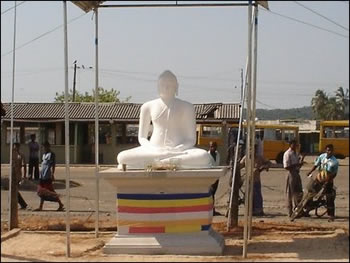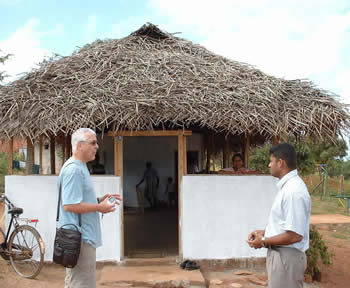Ilankai Tamil Sangam29th Year on the Web Association of Tamils of Sri Lanka in the USA |
|||||||
 Home Home Archives Archives |
Laid OpenTamil Guardian editorial, September 2, 2009
The engineered humanitarian crisis engulfing the Tamil people is deepening. Despite the alarm and concern expressed by various governments and other international actors, the Sri Lankan state continues to heap new miseries on hundreds of thousands of Tamils it has incarcerated in barbed wire-ringed and militarized camps. At the same time, the Sinhala state continues to subject the Tamil areas of the island to further economic blockade and other forms of military repression, while those Tamils in the south live on a knife-edge of arbitrary arrest, murder and rape by its various forces. This is not a question of state weakness, but the contrary: it is racist authoritarianism. The Sinhala state's rabid defiance to external calls over even basic humanitarian issues is instructive. The international community should recognize that a Sinhala polity which so deliberately and blatantly subjects the Tamils to deprivation is simply not going to recognize Tamils’ rights, let alone accommodate their grievances or political aspirations. The Tamil people should realize the futility of relying on Sri Lanka being embarrassed into behaving by international condemnation alone.
Something more needs to be done if the - now open - Sinhala chauvinism long embedded in the Sri Lankan state and polity is to be checked and a secure and stable peace made possible. Racism, especially when entrenched thus, cannot be effaced by suasion and engagement, but by making it utterly impossible for it to hold sway. In short, as in the case of racist regimes that dominated peoples in other parts of the world, the international community must be prepared to isolate and exclude the Sri Lankan state until it is prepared to adhere, no matter how reluctantly, to international norms of governance.
As Professor Sankaran Krishna has succinctly put it, "Sri Lanka's movement from a peaceful, indeed idyllic Ceylon to a synonym for macabre ethnic violence is the story of a majority community's attempt to fashion a nation in its own image through monopolisation of the state and of the consequent emergence of a secessionist ethnonational movement." For much of the recent past, a succession of Sinhala leaders have been able to use the rhetoric of liberalism - democracy, free markets and peace - to secure international financial, military and political support as they continued to fashion a Sri Lanka in which the minorities may exist at the pleasure of the majority. This is why, having defeated the military resistance of the Liberation Tigers, the Sinhala polity is pursuing a particular set of governance practices. Herein lies the rub. Whilst international actors are bewildered by the Mahinda Rajapakse regime's recalcitrance and violent conduct, both Tamils and Sinhalese recognise that these practices are fully in keeping with the 'Sinhala-Only' - or 'Sinhala-First' - ethos that first sparked communal separation and antagonism in the island since almost immediately after independence. The crisis in Sri Lanka now, more than ever before, reflects the irreconcilable contradiction between two different visions of what Sri Lanka should be: a liberal state and a Sinhala-Buddhist one. The international community aspires to an equitable, multi-ethnic, multi-cultural, multi-religious state in which the rule of law and absolute equality of individuals hold. But the Sinhala-Buddhist nation-building project - of which the ethnic conflict is both consequence and form - aspires to a Sinhala-land in which the majority's culture, religion and ethnicity is privileged above those of others. This is not some shrill exaggeration on our part. This logic is clearly embedded in Sri Lanka's constitution and flag, for example, and in state practices, including recruitment to the military, the direction of state investment, discrimination in humanitarian provision and so on. It is reflected in the unguarded rhetoric of all Sinhala leaders - including those embraced by the global liberal community. The Tamils are not going to accept Sinhala domination. Indeed, it is the violence and deprivation unleashed on the Tamils by successive Sinhala governments that have sedimented an unyielding commitment within the Tamil psyche to securing equality between the two nations. The conduct of the Rajapakse regime has resulted, especially since the Sinhala state declared victory over the LTTE, in a welcome closing of ranks amongst Tamils of various political hues: the case for an independent Tamil Eelam has been incontrovertibly made. These are therefore formative times for Sri Lanka's future. The central question is will the international community be able to contain and constrain the Sinhala nationalism now rampant in Sri Lanka. The future peace rests entirely on this.
| ||||||

